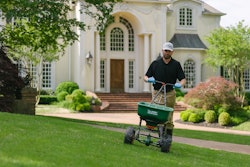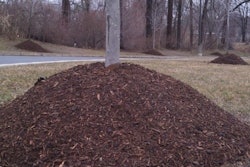
Although we often think of landscaping safety and risk in terms of operating equipment or lifting heavy objects, a major safety issue comes from the temperature. Working in the heat all day can become a dangerous situation for crews. As a landscape business owner, it will benefit you to understand the risks associated with heat-related illnesses and how to prevent a situation from becoming life-threatening.
Educate yourself on the signs and symptoms
Taking the time to become better educated on the signs and symptoms of a heat-related illness can prevent a problem from getting a lot more serious. These types of conditions often come on fast and can even become life-threatening if swift action is not taken. That’s why it’s so important that you educate yourself—and your crews—on what to look for.
The three situations you need to be the most familiar with are heat stroke, heat exhaustion, and heat cramps. Let's look at each.
Heat stroke
The National Institute for Occupational Safety and Health (NIOSH), which is a division of the Centers for Disease Control (CDC) has reported that heat stroke is the most serious of the heat-related illnesses. It can be deadly. Heat stroke happens when the body loses the ability to regulate temperature. When this occurs, the body temperature can rise as high as 106 degrees (or even higher) in a matter of minutes.
The symptoms associated with heat stroke are:
- Seizures
- Loss of consciousness
- Hot, dry skin or profuse sweating
- Confusion, altered mental status, slurred speech
- Very high body temperature
This is an emergency situation that warrants an immediate call to 911. In the meantime, move the individual to a shady spot, remove the outer clothing, and wet the skin with water. Circulate the air around the person to speed the cooling process.
Heat exhaustion
Heat exhaustion is another serious heat-related condition that requires quick action. NIOSH reports that heat exhaustion is a response to excessive water loss through sweating.
The following are signs of heat exhaustion.
- Headache
- Cool and moist skin with goosebumps in heat
- Rapid pulse
- Nausea
- Dizziness
- Weakness
- Irritability
- Thirst
- Heavy sweating
- Elevated body temperature
Heat exhaustion can lead to heat stroke, which is why it's so important to take action. If you or a crew member appears to be experiencing heat exhaustion, all activity should be stopped. Move to a cooler place and drink cool water or a sports drink.
Heat cramps
Heat cramps can also be experienced when working in the hot weather. These occur from excessive sweating. According to NIOSH, sweating will deplete the body's natural salt and moisture levels, which in some people, can lead to cramping. Keep in mind that cramping can standalone as an issue by itself or it could be one of the symptoms of heat exhauastion.
If you or a crew member is experiencing cramping due to the heat, take a break and drink some water or a sports drink.
Taking steps to stay safe in the heat
These heat-related issues can be difficult for many landscaping companies as the work must carry on even on hot days. But there are ways to make your crews safer by starting the work earlier in the day and encouraging them to take a lot of breaks. Make sure to fill coolers with water or sports drinks and to set up tents if there is no place for your crews to take a break in the shade. It's also important that your crew leaders actually enforce these breaks.
On top of all that, be sure to educate everyone on the signs and symptoms of heat-related illnesses. Reminders should be given during morning meetings so that the information is fresh in everyone's minds. The buddy system can be important with these issues as it can be difficult to recognize signs and symptoms in oneself (particularly since confusion can be part of it).
Working together, you can help to keep your crews safe on hot days.










